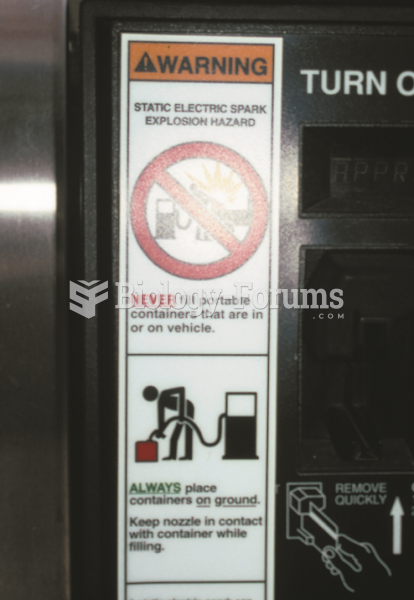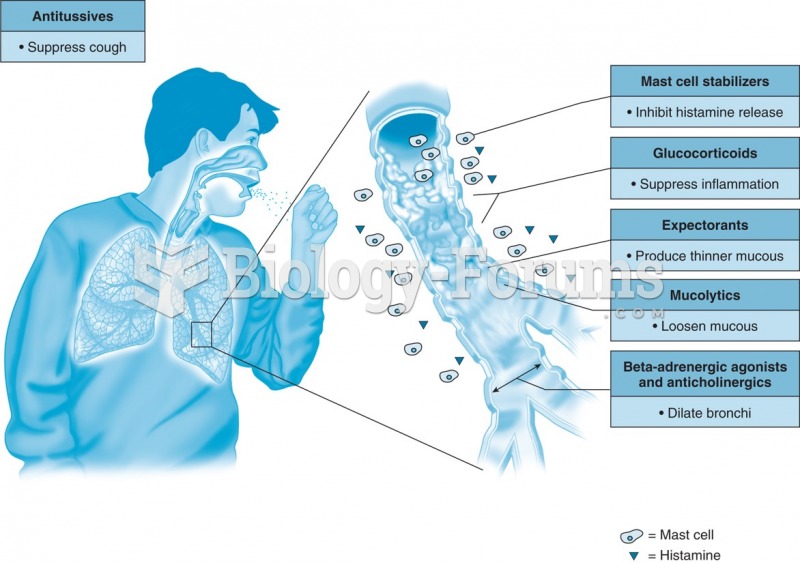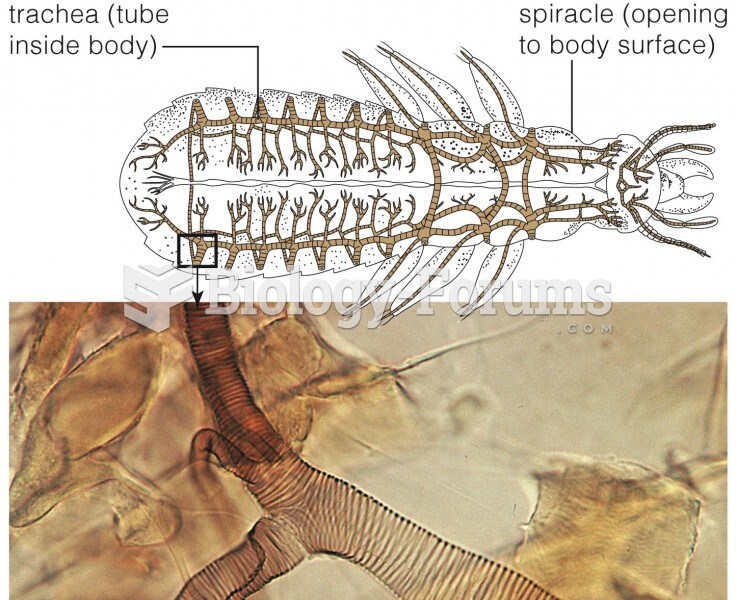This topic contains a solution. Click here to go to the answer
|
|
|
Did you know?
There are more sensory neurons in the tongue than in any other part of the body.
Did you know?
Asthma cases in Americans are about 75% higher today than they were in 1980.
Did you know?
Your heart beats over 36 million times a year.
Did you know?
To prove that stomach ulcers were caused by bacteria and not by stress, a researcher consumed an entire laboratory beaker full of bacterial culture. After this, he did indeed develop stomach ulcers, and won the Nobel Prize for his discovery.
Did you know?
The first oral chemotherapy drug for colon cancer was approved by FDA in 2001.
 During World War I, advancing armies unloosed ferocious artillery barrages to destroy deeply entrenc
During World War I, advancing armies unloosed ferocious artillery barrages to destroy deeply entrenc
 Many gasoline service stations have signs posted warning customers to place plastic fuel containers ...
Many gasoline service stations have signs posted warning customers to place plastic fuel containers ...





